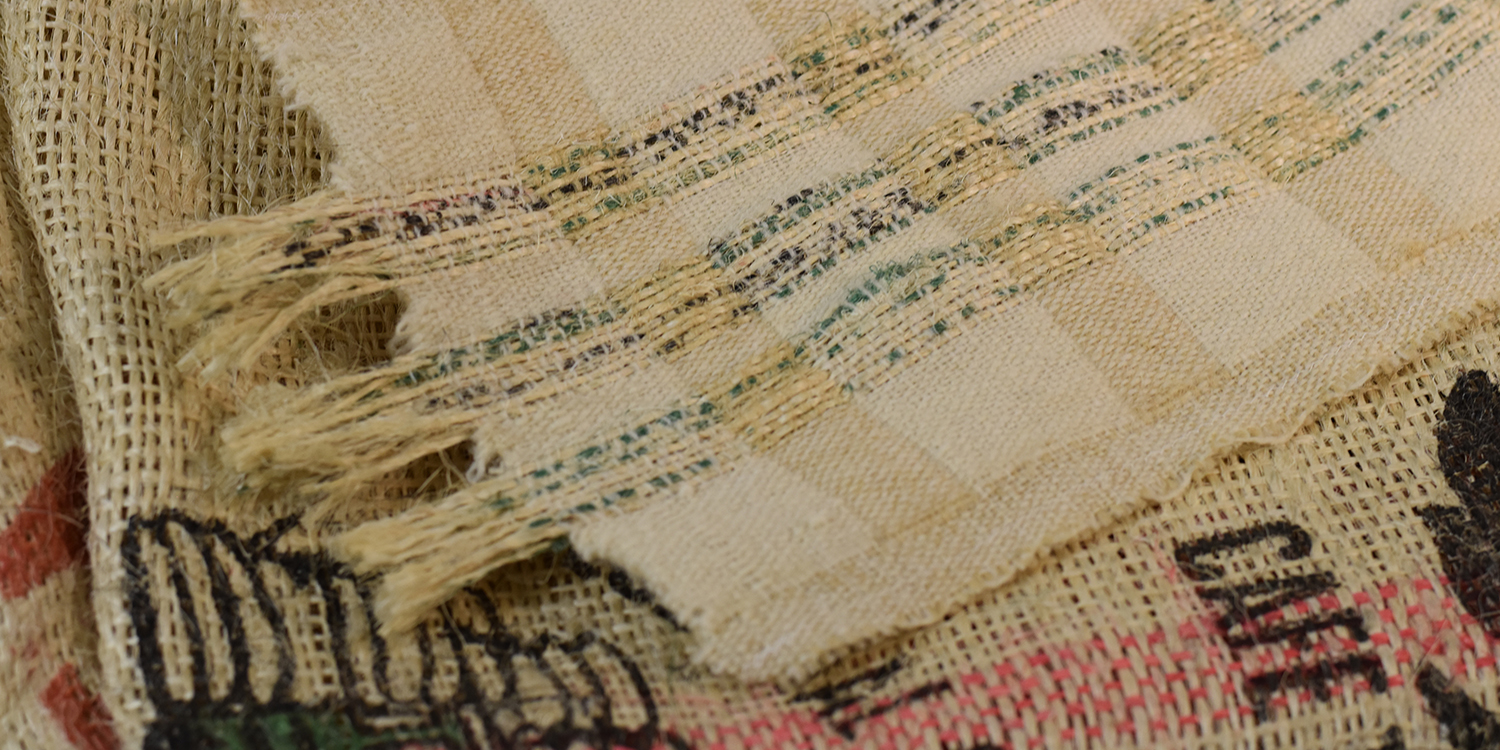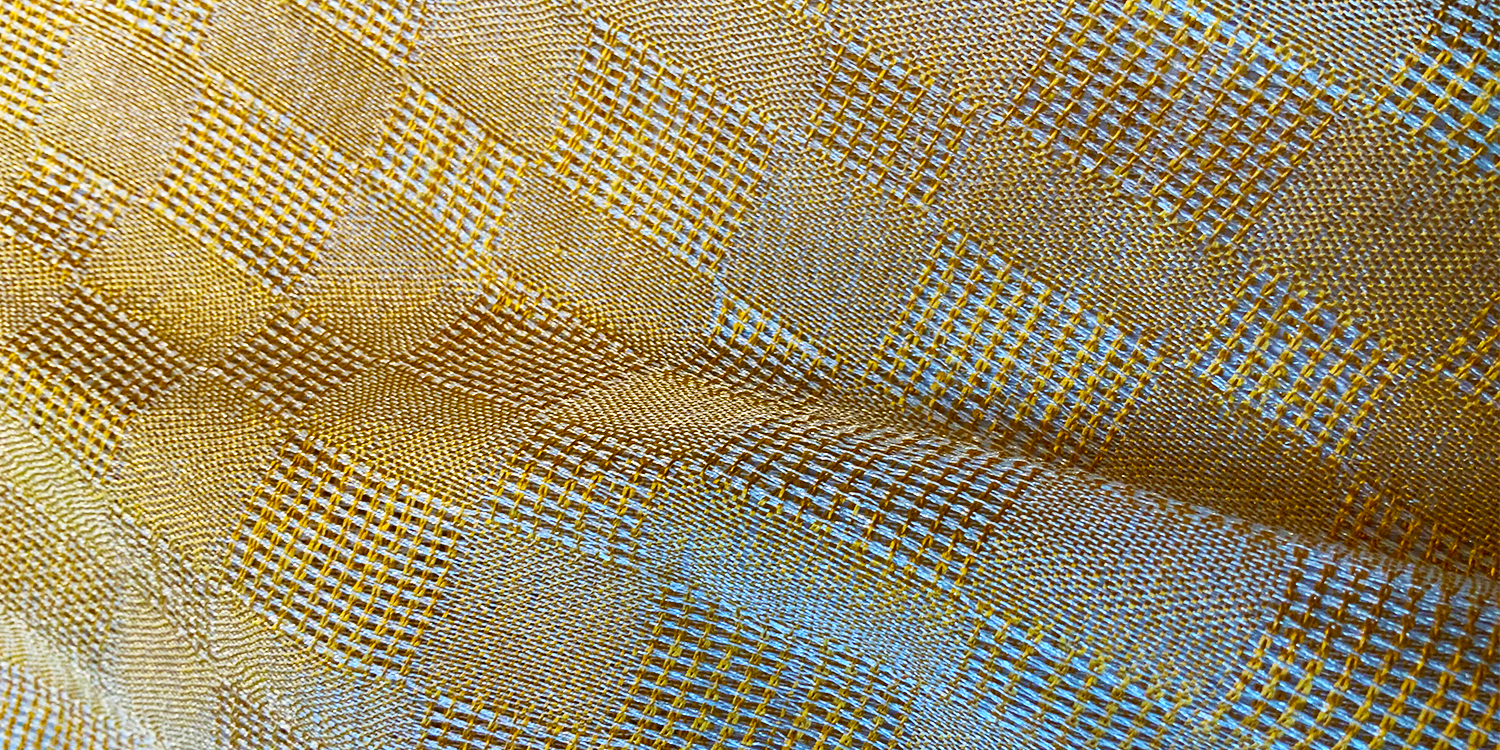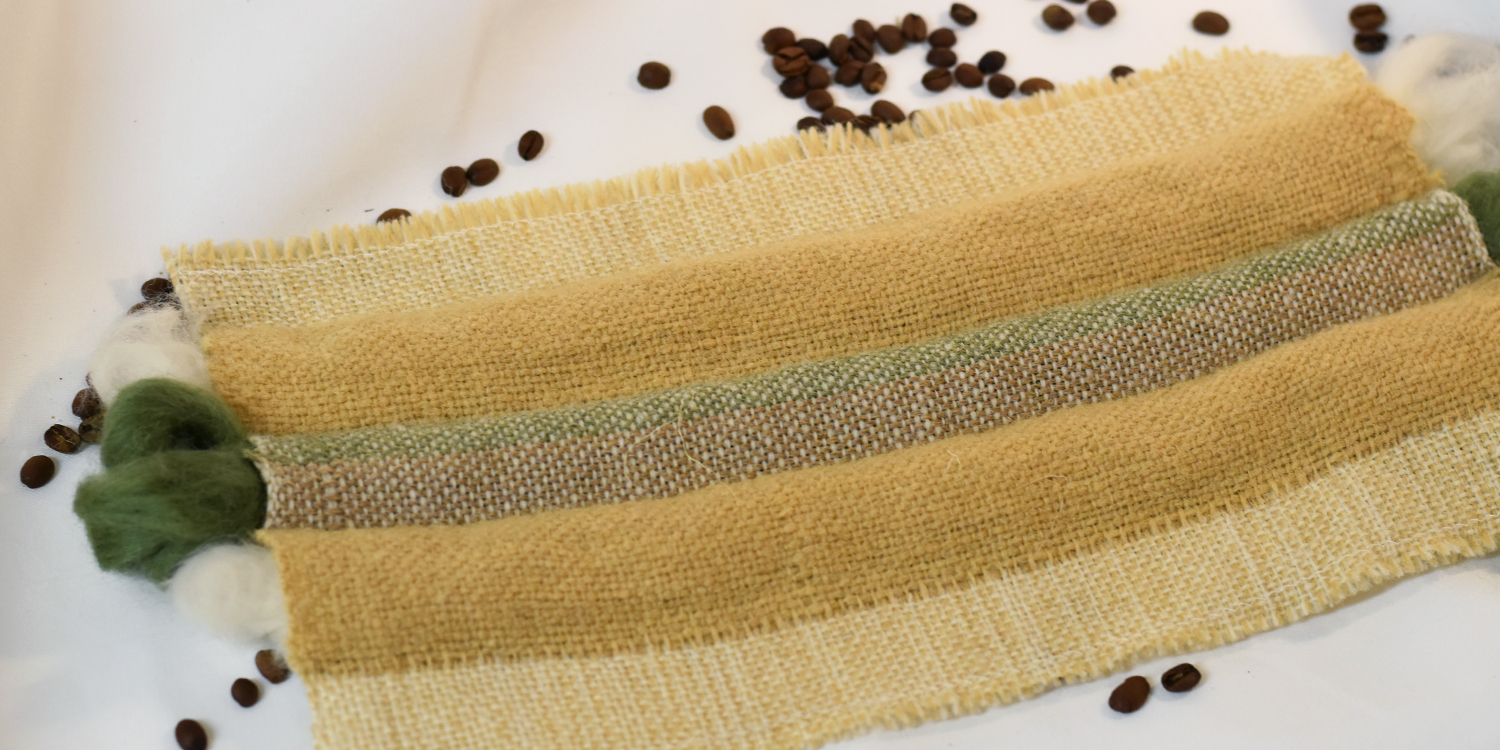Properties & Qualities
Application
Sample Making Other
Colour
Black Brown Green
Sample Information
Date of creation
June 2023
Dimensions
Length : 7” x Width : 16.5”
Weight
55g
Culture & Context
I have been working as a part time barista for the past 18 months while also pursuing
my textiles career. In this time, I have fallen in love with the process of making coffee
however there is a huge amount of waste that comes with it. Through this project I
wanted to see how many ways I could utilise waste from the coffee industry and turn it
into a new/ experimental material or process.
This sample was inspired by the large bags that the green beans arrive in before the
beans are roasted. I collected a number of these bags and thought the yarn in them
would be interesting to try and reuse/ repurpose for new weaves and materials. I
unraveled the bags and then wove them into this sample focusing on the sections of
yarns that had colour on them from the printed words and imagery on the original
sacks.
Process & Production
The process of this material was firstly setting up the loom. When that was complete I
started weaving. This sample focused on using the blocks in this set up ensuring that
Block A was coffee front facing and Block B was cream front facing. The first stripe
was using the 1ply cream Galway wool as the weft and then I carefully placed and
used the unravelled coffee bag yarns and the next 1.5” stripe and this alternated until
the sample was my desired length. I trimmed the edges of the coffee bag weft so that
they were all a similar length but also kept some if the length at the edges to give the
sample the frayed edges and texture from the coffee bags.
Recipe Details
Loom Set Up :
Double Cloth set up using 16 shafts on a 24 shaft shaft ARM Touch 60 Loom.
Warp 1 & 2 : Galway Wool 1ply – length 4 yards, one dyed with waste coffee grounds
the other was left plain.
Weight : 232g for both.
24epi, 336 ends in total
Width : 14”
Straight draft in blocks AABAABAABAABAA
Material Sample :
Spend some time unravelling the green bean coffee bags/ sacks to get some of your
weft yarn prepared.
2” stripe plain weave using the 1ply Galway wool as the weft. Block A is coffee front
facing and Block B cream front facing.
1.5” stripe plain weave using the thick and heavier weight coffee bag yarn as the weft,
again keeping Block A is coffee front facing and Block B cream front facing.
1” stripe plain weave using the 1ply Galway wool as the weft. Block A is coffee front
facing and Block B cream front facing.
1.5” stripe plain weave using the thick and heavier weight coffee bag yarn as the weft,
again keeping Block A is coffee front facing and Block B cream front facing.
1” stripe plain weave using the 1ply Galway wool as the weft. Block A is coffee front
facing and Block B cream front facing.
This was repeated until the sample was the desired length.
Credits
Craft Maker
Amy Kerr (AK Textiles)
Library Contributor
National College of Art & Design Ireland
Photographer
Amy Kerr



















